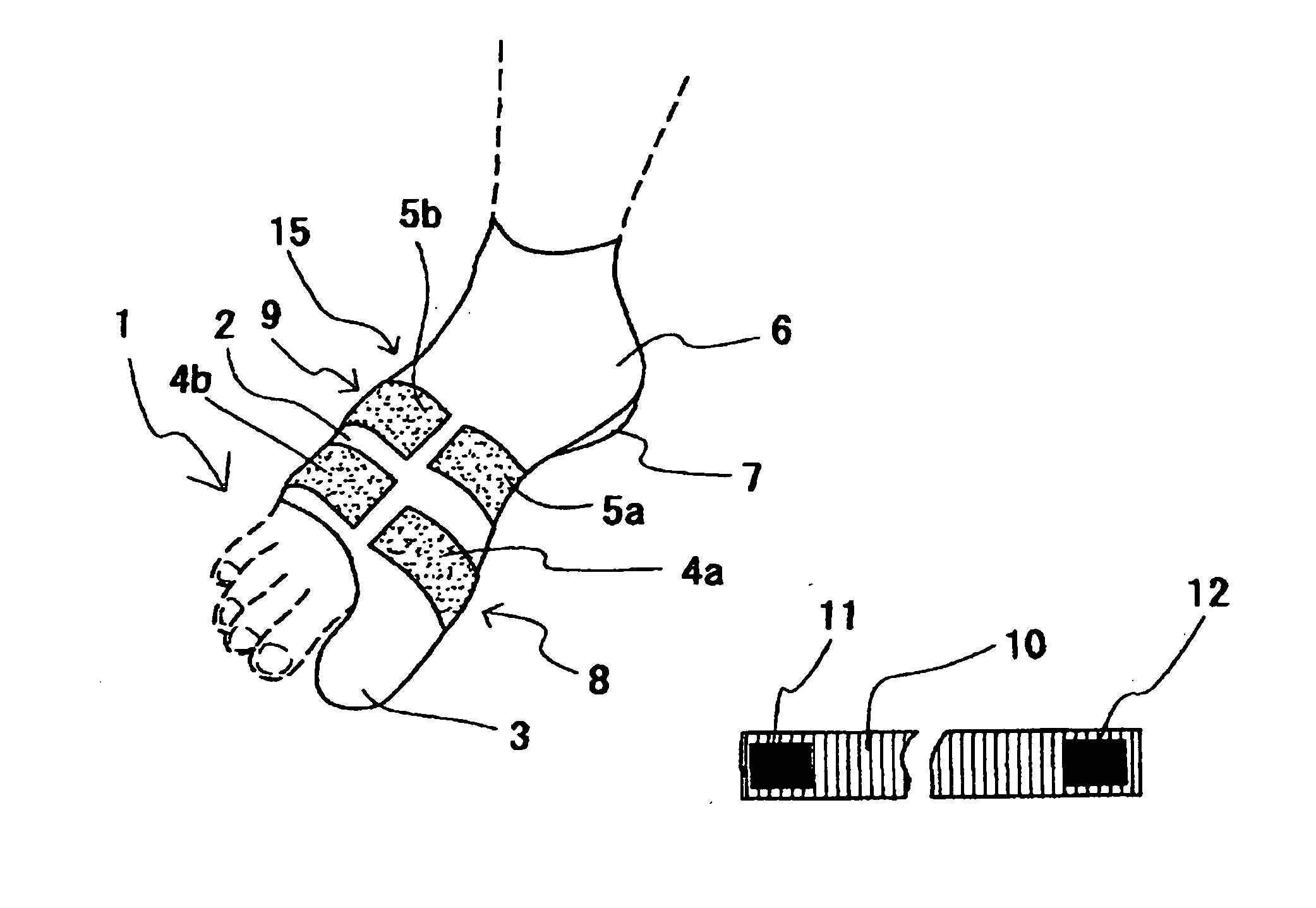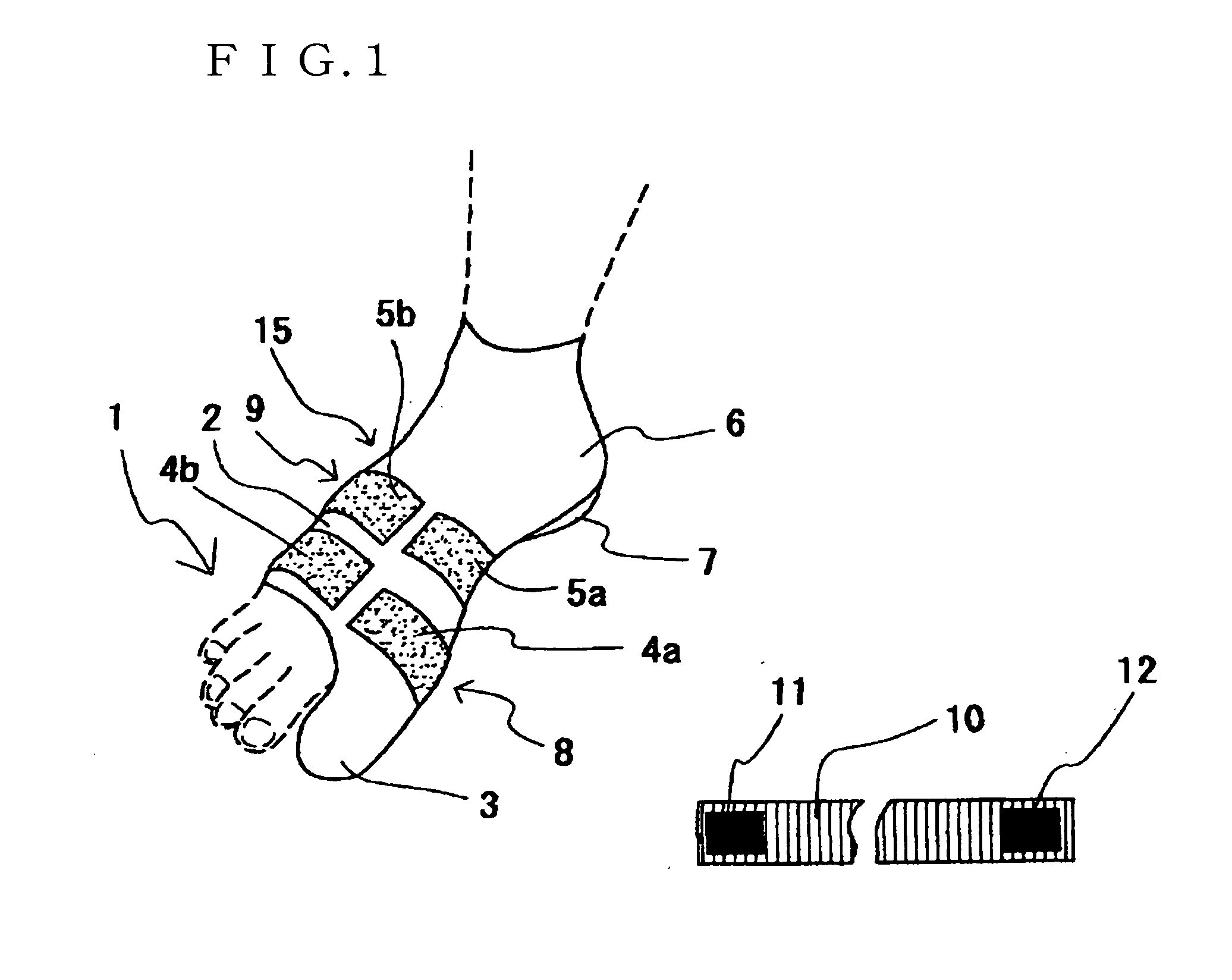Support for foot injuries
a support device and foot technology, applied in the field of foot disorders, can solve the problems of insufficient fundamental improvement of foot disorders, insufficient redressing effect, easy deformation of insoles, etc., and achieve the effect of effective redressing foot disorders, improving the way that weight is applied to the foot, and being easy to handl
- Summary
- Abstract
- Description
- Claims
- Application Information
AI Technical Summary
Benefits of technology
Problems solved by technology
Method used
Image
Examples
Embodiment Construction
[0037]Hereinafter, an embodiment of the present invention will be explained.
(Configuration)
[0038]As shown in FIG. 1, a supporter for foot disorders 100 can be roughly divided into a fitting assisting device 2 and a fastening belt 10.
[0039]The fitting assisting device 2 is of a material having moderate flexibility such as cloth, and is cylindrical overall to cover a foot 1. On the front end of the fitting assisting device 2, a big toe insertion part 3 is provided, and on the rear end, for hooking on to the heel 7, a heel wrapping part 6 is provided. The big toe insertion part 3 prevents the fitting assisting device 2 from slipping towards the heel 7 when wearing the fitting assisting device 2. On the other hand, the wrapping part 6 acts in preventing the fitting assisting device 2 from slipping towards the toes.
[0040]The shape of the fitting assisting device 2 is not limited to the above mode, and may be of a sock-like pouch shape. For the material of the fitting assisting device 2, ...
PUM
 Login to View More
Login to View More Abstract
Description
Claims
Application Information
 Login to View More
Login to View More - Generate Ideas
- Intellectual Property
- Life Sciences
- Materials
- Tech Scout
- Unparalleled Data Quality
- Higher Quality Content
- 60% Fewer Hallucinations
Browse by: Latest US Patents, China's latest patents, Technical Efficacy Thesaurus, Application Domain, Technology Topic, Popular Technical Reports.
© 2025 PatSnap. All rights reserved.Legal|Privacy policy|Modern Slavery Act Transparency Statement|Sitemap|About US| Contact US: help@patsnap.com



